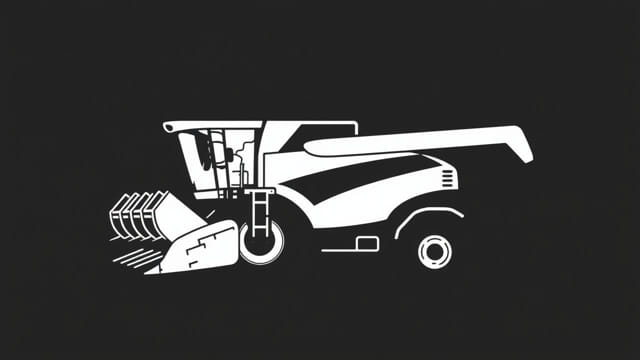For livestock farmers and commercial forage producers, having the right harvesting equipment can make a major difference in productivity, feed quality, and overall efficiency. One machine that has gained strong recognition in this space is the JF 1260 forage harvester. Known for its robust design and high performance, the JF 1260 is often sought after by farmers looking to upgrade their forage systems. If you’re considering investing in a JF 1260 forage harvester for sale, it’s essential to understand its features, benefits, and what to look for when purchasing one.
Overview of the JF 1260 Forage Harvester
The JF 1260 is a powerful and versatile forage harvester manufactured by JF, a company known for producing durable agricultural machinery. It is specifically designed to chop a variety of crops such as maize, sorghum, napier grass, sugarcane tops, and other forage crops. The chopped material is ideal for making silage or feeding livestock directly, especially in dairy and beef operations.
Key Specifications
- Cutting width: approximately 1.2 meters
- Number of blades: usually 12 high-speed blades
- Output capacity: can harvest up to 35 tons/hour, depending on crop condition
- Power requirement: compatible with tractors above 80 HP
- Chopping sizes: adjustable between 5 mm and 50 mm
Its compatibility with a wide range of tractors and its efficient chopping mechanism make it a valuable machine for medium to large-scale forage production.
Advantages of the JF 1260 Forage Harvester
Investing in a forage harvester is a significant decision, and the JF 1260 stands out for several practical reasons. Farmers who have used this machine often highlight its reliability and performance, especially in demanding field conditions.
Main Benefits
- High output: Capable of processing large volumes of forage quickly
- Uniform chopping: Ensures consistent feed quality, crucial for livestock digestion
- Durability: Built with strong materials to handle tough crops and long hours of work
- Low maintenance: Designed for easy servicing and part replacement
- Fuel-efficient: Works with moderate horsepower tractors to reduce operating costs
These advantages make the JF 1260 forage harvester a popular choice in both tropical and temperate regions, especially where forage is a critical component of livestock operations.
What to Look for When Buying a JF 1260 Forage Harvester for Sale
Whether buying a new or used unit, it’s important to inspect the machine carefully to ensure it meets your needs. With a used JF 1260, condition and maintenance history play a significant role in determining value and longevity.
Inspection Checklist
- Blades and rotor: Check for sharpness, cracks, or excessive wear
- Gearbox and PTO shaft: Ensure smooth operation and no signs of damage
- Chopping chamber: Inspect for rust, blockage, or bent components
- Hydraulics and chute: Test for flexibility and proper discharge control
- Frame and tires (if applicable): Look for signs of fatigue, bends, or corrosion
When possible, ask the seller for a demonstration or a recent maintenance record. This gives you confidence that the forage harvester will perform well in the field.
New vs. Used JF 1260 Forage Harvesters
The decision between buying new or used depends on your budget, intended usage, and how soon you need the machine. Both options have their pros and cons.
Buying New
- Comes with manufacturer warranty
- Latest features and improved design
- Higher upfront cost
- No risk of hidden damage or misuse
Buying Used
- More affordable initial investment
- May include modifications or extras from previous owner
- Requires careful inspection
- Shorter life expectancy depending on use
If your operation runs on tight margins, a well-maintained used JF 1260 can offer great value without compromising much on performance.
Where to Find a JF 1260 Forage Harvester for Sale
There are several reliable sources for purchasing this model. Availability might vary depending on your region, but with the popularity of the JF brand, units can often be found through the following channels:
Common Sales Channels
- Agricultural equipment dealerships
- Online classified sites and marketplaces
- Used equipment auctions
- Local farmer-to-farmer networks
Before finalizing a purchase, compare offers from multiple sources to ensure you’re getting a fair price. Also, consider transportation costs if the machine is not available locally.
Typical Price Range for JF 1260 Forage Harvesters
The price of a JF 1260 can vary significantly based on age, condition, and included accessories. On average:
- New unit: $7,000 $10,000 (may vary by dealer and region)
- Used unit (good condition): $3,500 $6,000
Keep in mind that prices fluctuate with demand and availability, especially around planting or harvesting seasons.
Maintenance and Spare Parts Availability
One of the strengths of owning a JF 1260 forage harvester is the ease of maintenance and availability of spare parts. Many agricultural supply stores and JF-authorized service centers carry the essential components needed for upkeep.
Common Replacement Parts
- Blades and knives
- Bearings and bushings
- Drive belts and chains
- PTO shaft parts
- Hydraulic fittings
Regular maintenance such as lubrication, blade sharpening, and checking for wear will help prolong the life of your machine and ensure reliable performance throughout the season.
A Reliable Investment for Forage Producers
The JF 1260 forage harvester is a trusted machine that delivers high performance, durability, and excellent feed quality. Whether you’re purchasing a new or used model, the key is to ensure the machine fits your farm’s requirements and is in good working condition. With proper maintenance and a little research, buying a JF 1260 forage harvester for sale can be one of the most valuable investments for livestock and silage operations. Its solid design, efficient chopping system, and ease of operation make it a dependable ally in modern forage harvesting.
